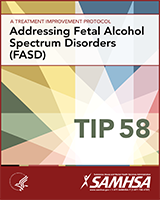This TIP, like all others in the TIP series, recognizes the importance of delivering culturally competent care. Cultural competency, as defined by HHS, is…
“A set of values, behaviors, attitudes, and practices within a system, organization, program, or among individuals that enables people to work effectively across cultures. It refers to the ability to honor and respect the beliefs, language, interpersonal styles, and behaviors of individuals and families receiving services, as well as staff who are providing such services. Cultural competence is a dynamic, ongoing, developmental process that requires a long-term commitment and is achieved over time” (U.S. Department of Health and Human Services, 2003, p. 12).
This section discusses national information resources that are available on the topic of cultural competence or for providing care to specific cultural groups (listed alphabetically). However, the absence of a specific cultural group from this section is not meant to suggest that cultural competency is not an issue for that population. Individuals from all cultural backgrounds deserve respect and attention in a treatment environment, and the significance of culture needs to be recognized in relation to many different areas of a person's life; race, ethnicity, gender, sexual orientation, age, socioeconomic status, language, etc.
Chapter 3 of this TP, Clinical Vignettes, contains additional information on the essential elements of culturally competent counseling. |
Native Populations
If your agency is not fully capable in serving native clients or a native client requests culturally specific services, the Indian Health Service (IHS) provides an interactive search map (http://www.ihs.gov/findhealthcare/) that can be used to find an IHS, Tribal, or Urban Indian Health Program (UIHP) facility. This search engine scans a variety of settings, including hospitals, behavioral health settings, village clinics, and school health facilities.
If you are unable to locate services through the map, the Health Resources and Services Administration (HRSA) provides the HRSA Health Center locator (http://findahealthcenter.hrsa.gov/Search_HCC.aspx) to determine if there are other culturally specific services available in your area. |
Cultural Competency Training/Learning
The SAMHSA FASD Center for Excellence can provide training or technical assistance (TA) on cultural competency topics, or can put your agency in touch with a nearby specialist. Training and TA request forms can be accessed online (http://www.fasdcenter.samhsa.gov). Chapter 3 of this part of the TIP, Clinical Vignettes, also contains a checklist of core competencies for the culturally sensitive counselor.
In addition, the HRSA's Culture, Language and Health Literacy page (http://www.hrsa.gov/culturalcompetence/index.html) provides links to a range of resources on cultural competence when serving clients of differing cultures, genders, and sexual identities. |
